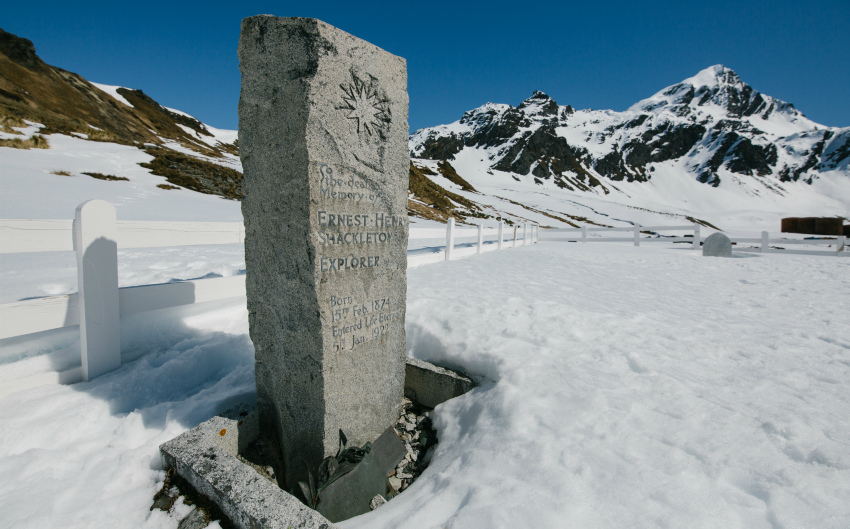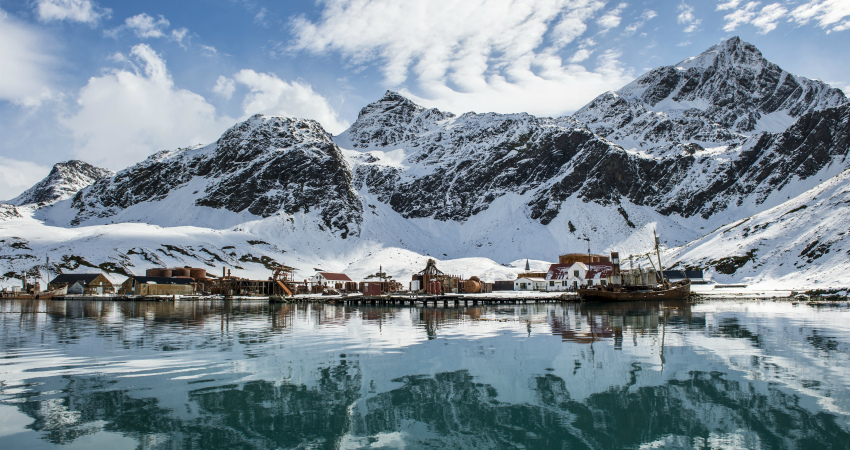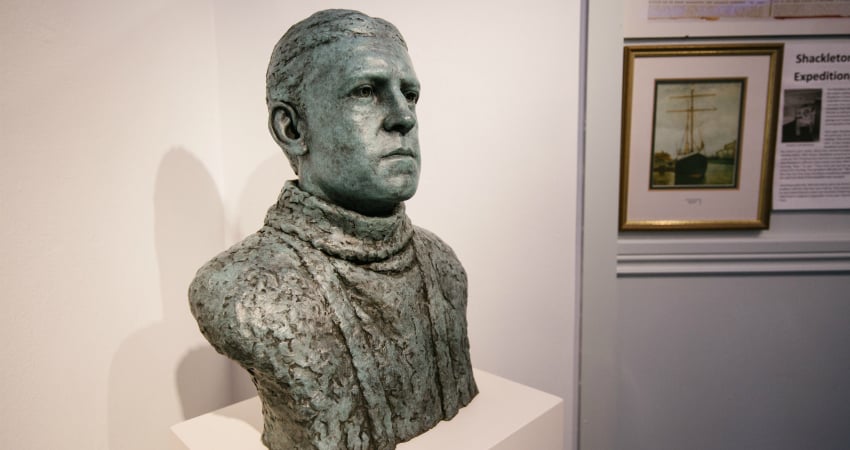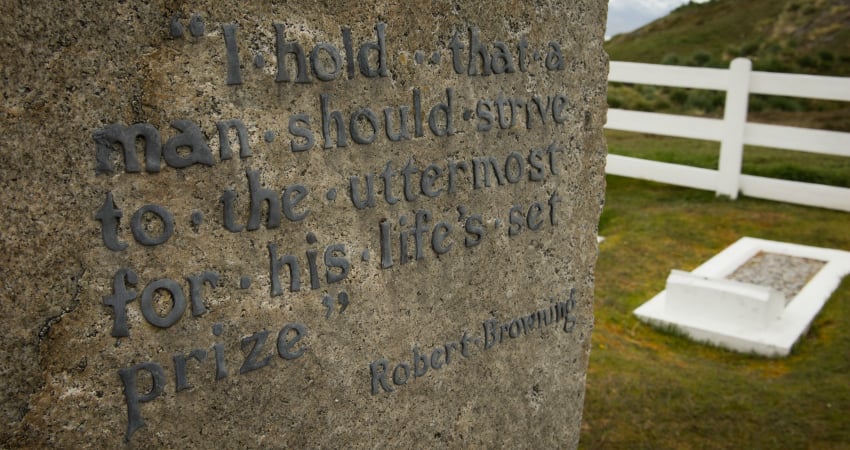Ernest Shackleton's Grave Site
7 December, 2022

Visiting the gravesite of Sir Ernest Shackleton is an emotional stop on an Antarctic cruise that includes exploration of South Georgia. A renowned polar explorer, Shackleton died unexpectedly of a heart attack in 1922, at the beginning of a new voyage. South Georgia played a key role in his previous expeditions and was very dear to him, and that is why Grytviken was chosen as the final resting place of Sir Ernest Shackleton. Paying respects to the great explorer is a special experience for many Antarctic travelers.
South Georgia and the South Sandwich Islands are the most southerly British overseas territory in the southern Atlantic Ocean. South Georgia was first sighted by a London merchant Antony de la Roche in 1675, marked Roche Island on early maps. In 1775, James Cook made the first landing and claimed the island, naming it in honor of King George III – Isle of Georgia. In the 19th century, South Georgia was used for seal hunting, but the first permanent habitation was a whaling station at Grytviken.

The island became widely known during the Imperial Trans-Antarctic Expedition in 1914-1917. Shackleton planned to go ashore and be the first ever to traverse the seventh continent. A crew of 28 men left Grytviken aboard Endurance and headed south towards the Weddell Sea. Not long after the launch, ice conditions worsened, and the crew had to hand-carve their way through the pack ice. Endurance braved the ice for a few ten long months before eventually being crushed and sinking in the Weddell Sea.
The crew spent the austral summer camped out on a drifting ice floe. Yet another challenge was waiting for them – the floe broke apart underneath them. They got into their lifeboats and steered a course for Elephant Island, a desolate glacier-covered rock north of the Antarctic Peninsula. This was the best chance for finding shelter. However, there was little hope of being rescued by a passing ship in such a remote place. Shackleton made the brave decision to leave and seek help.
On April 24, 1916, he and five of his men set sail for South Georgia, 800 miles across the notoriously rough Scotia Sea. Shackleton and his men finally came ashore on May 10, 1916. The whaling stations were on the other side of the island across mountains and glaciers. Shackleton and two of the men hiked 32 miles over extremely hazardous terrain for 36 hours before reaching the whaling station at Stromness Bay. Rescue missions were then sent for the men left behind, all of whom lived to tell the amazing tale of the Endurance expedition.

In 1920, Shackleton became planning his fourth Antarctic expedition. He recruited a team of twenty, including his right-hand man Frank Wild. He acquired a Norwegian sealer Quest and a small plane for aerial exploration. The expedition set sail on March 17, 1921, but did not go according to plan due to constant troubles with the vessel. The crew had to stop for repairs at many ports along the route and by the time they were completed in late November, it was too late to reach Antarctica, so the expedition headed to South Georgia instead.
The setbacks must have weighed heavily on Shackleton, and his sudden death of a heart attack on January 5, 1922, became a shock to the crew. He was only 47 years old. The crew held a ceremony and sailed on aboard Quest, bringing the body to South America to be repatriated. On arrival, they were met with a letter from Lady Emily Shackleton requesting that her husband be buried on South Georgia, his favorite place. This sentiment is echoed by nearly all who visit here today.

Shackleton’s funeral took place at the Whalers Church at Grytviken on March 5, 1922. The granite headstone that we see today was made in Edinburgh and erected six years later in the small whalers’ cemetery. The stone is inscribed with a quotation from one of Shackleton’s favorite poets, Robert Browning, “I hold…that a man should strive to the uttermost for his life’s set prize”.
Since the days of Sir Ernest Shackleton, Antarctic exploration has become more accessible. During the austral summer, you can visit South Georgia and Shackleton’s gravesite on an expedition cruise. The Whaling Church cemetery has approximately forty graves and when we visit the site, we do everything we can to do it respectfully.

As you stand in the cemetery, you feel the emotional connection to Sir Ernest Shackleton and South Georgia, and history comes alive. Only a select number of people have the chance to visit the gravesite at Grytviken during their Antarctic cruise and celebrate the memory of the legendary explorer.